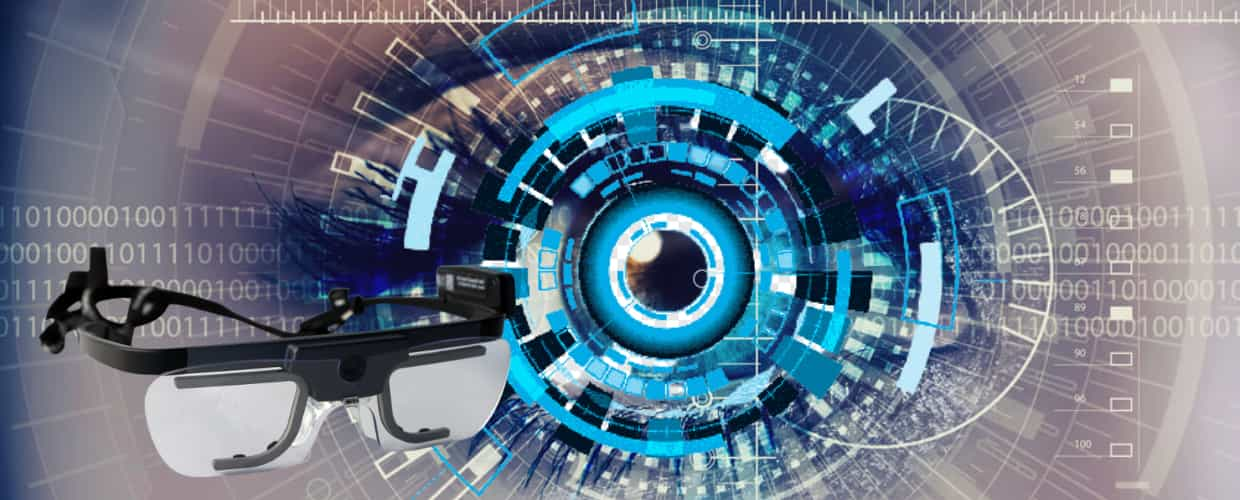Advanced eye-tracking input devices have the potential to transform human-computer interaction and provide a more natural and intuitive way of interacting with technology. Advanced eye-tracking input devices are a fascinating and rapidly-evolving technology that has the potential to revolutionize human-computer interaction.
Eye-Tracking Devices as input
Advanced eye-tracking devices can be input devices to control a computer, virtual reality environment, or other technology. By tracking the user’s gaze and interpreting it as input, the devices can provide a more natural and intuitive way of interacting with technology.
Eye-tracking input devices can perform various tasks, including selecting menu options, clicking buttons, scrolling through documents, and navigating 3D environments. The input devices can also control assistive technologies such as speech-to-text or text-to-speech software, making them an important tool for individuals with disabilities.
Eye-tracking devices enable users to perform these tasks more quickly and with less physical effort, increasing productivity and efficiency. The devices can also improve accessibility for individuals with disabilities or impairments that are difficult or impossible to traditional input methods.
Benefits of Eye-Tracking Devices
Advanced eye-tracking input devices offer a range of benefits that have the potential to revolutionize human-computer interaction and improve accessibility and usability for a wide range of users.
Improved Accessibility
The input devices can greatly improve accessibility for individuals with disabilities or impairments that make traditional input methods difficult or impossible to use. For example, individuals with physical disabilities that make it difficult to use a mouse or keyboard can benefit from eye-tracking input devices, which allow them to control their computer using only their gaze.
Natural and Intuitive Interaction
Eye-tracking input devices provide a more natural and intuitive way of interacting with technology. Users can look at what they want to interact with rather than navigating complex menus or using physical controls, making it easier to perform complex tasks, such as navigating large data sets or manipulating 3D objects in virtual environments.
Improved Efficiency and User Experience
The input devices can improve efficiency by allowing users to interact with technology more quickly and easily. The input devices can improve the user experience by making technology more intuitive and accessible, increasing user satisfaction and engagement, and positively affecting user adoption and product success.
Greater Insights into User Behavior
Eye-tracking input devices can provide valuable insights into user behavior and cognitive processes. Researchers can gain insights into user attention, engagement, and decision-making processes by tracking aspects of the user’s gaze, such as the duration and frequency of fixations and saccades. It can be particularly beneficial in contexts where speed and accuracy are important, such as in professional settings or the context of medical procedures.
Challenges of Eye-Tracking
While advanced eye-tracking input devices offer many benefits, several challenges must be addressed. Some of the primary challenges are given below.
Expensive
The input devices can be expensive, which can limit their access to certain groups of users. While the cost of these devices has been decreasing in recent years, they are still relatively expensive compared to traditional input methods like a mouse or keyboard.
Accuracy and Precision
The devices may not be accurate or precise enough for certain applications. For example, in medical applications where precise measurements are critical, the accuracy and precision of the input devices may not be sufficient.
Privacy and Security
Eye-tracking input devices capture sensitive data about users’ eye movements, which can raise privacy and security concerns. It’s important to ensure that appropriate safeguards are in place to protect users’ sensitive data and that these devices are used ethically and responsibly.
User Adaptation
Users may need to adapt to using the devices, which can be challenging for some users. For example, users may need to learn how to move their eyes in a way that is most effective for controlling the device, and they may need to practice using the device to become proficient.
Conclusions
Advanced eye-tracking input devices offer a range of benefits, and several challenges are associated with using eye-tracking as input. Addressing these challenges is critical to unlocking the full potential of the devices and ensuring that they are accessible and practical for a wide range of users and applications.
As technology evolves, we expect continued innovation in eye-tracking input devices and increased adoption across various industries and applications. With further development and refinement, the input devices will revolutionize how we interact with technology, making it more accessible, efficient, and intuitive for all users.
Read: A useful review of Touch Screen Monitors
ADDITIONAL NOTICE: Visit TechGolly.com to stay informed about technology news, discussions, trends, advice, opinions, directories, insights, and markets. TechGolly covers a wide range of the latest technology news, including business news, product news, stock market news, future tech news, and research news.


